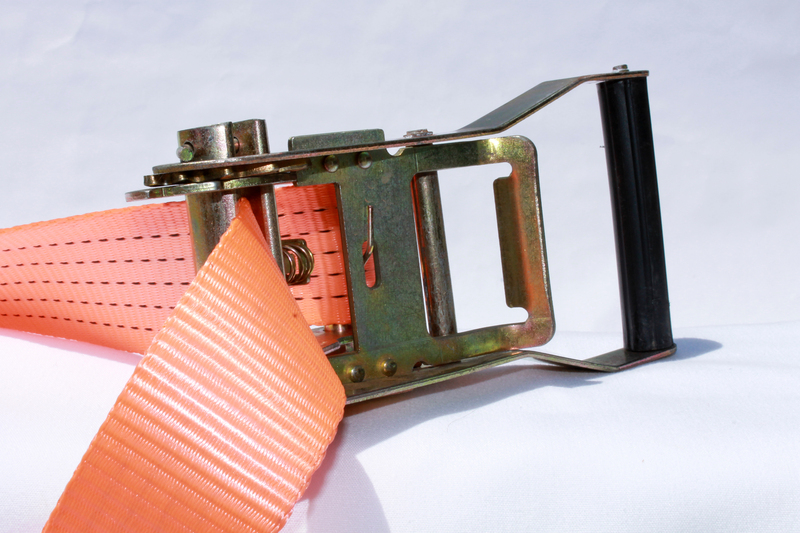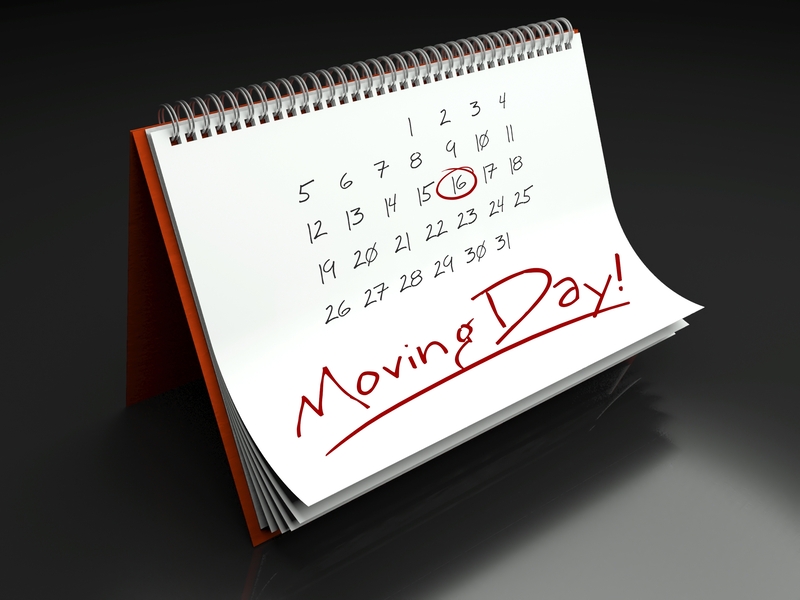Efficient Strategies for Bed and Mattress Relocation
Posted on 02/06/2025
Efficient Strategies for Bed and Mattress Relocation
Relocating your home presents a flurry of logistics, especially when it comes to moving large and bulky items such as beds and mattresses. Efficient relocation of beds and mattresses not only saves time and effort but also preserves the quality and lifespan of your bedding investment. In this comprehensive guide, you'll discover proven strategies and tips to move your bed and mattress efficiently--whether you plan to do it yourself or hire professionals.
Why Focus on Bed and Mattress Relocation?
Beds and mattresses are often among the most valuable and frequently used items in a household. Properly managing the relocation of mattresses and beds is crucial for several reasons:
- Protects against damage: Mattresses and bed frames are vulnerable to tears, stains, or structural damage if not handled correctly.
- Preserves hygiene: Beds can harbor allergens and dust mites. Proper packing prevents contamination.
- Simplifies setup in your new home: Efficient strategies allow for hassle-free reassembly and use after the move.

Pre-Relocation Preparation
Meticulous planning is the foundation of any efficient mattress and bed relocation. Follow these preparatory steps to streamline your move:
Measure Everything
- Take precise measurements of your mattress, bed frame, and headboard.
- Measure stairways, hallways, and doorframes at both old and new locations.
- Compare these to ensure smooth maneuvering without damage.
Assemble Proper Packing Supplies
- Mattress bags or covers to protect from dust, dirt, and moisture.
- Furniture blankets or moving pads for the bed frame and headboard.
- Ratcheting straps and ropes to safely secure items during transport.
- Basic tools (screwdrivers, allen keys, wrenches) for disassembly and reassembly.
- Labels, zip-lock bags, and permanent markers for organizing bolts and hardware.
Clean Before You Move
- Vacuum and clean the mattress and bed parts--moving is an excellent opportunity to refresh these items.
- Let the mattress air out; even sprinkle with baking soda to absorb smells before it's bagged.
Disassembling the Bed: A Step-by-Step Approach
Most beds cannot be moved in one piece. Follow these efficient strategies for disassembling your bed for safe and manageable relocation:
- Remove bedding and linens: Strip all sheets, pillows, blankets, and the mattress protector.
- Take out slats or support boards: These loose parts are easy to forget and lose during transport.
- Disassemble the bed frame: Using the appropriate tools, unscrew headboard, footboard, and side rails.
- Keep hardware organized: Store all screws, bolts, washers, and small components in a labeled zip-lock bag taped securely to a frame part.
- Wrap and protect: Use moving blankets or bubble wrap for all separated sections to prevent scratches and nicks.
Packing and Protecting Your Mattress
Mattresses come in various sizes (twin, queen, king) and constructions (innerspring, memory foam, hybrid). Regardless of type, proper packing is crucial to mattress relocation:
- Use a mattress bag: Always encase the mattress in a thick plastic cover or bag. This guards against moisture, bugs, and contaminants.
- Seal it tight: Tape the opening shut to ensure a secure barrier against the elements.
- Don't bend if not allowed: Most innerspring mattresses should never be bent or folded. However, some foam or latex mattresses are bendable--check the manufacturer's guidelines.
- Carry upright when possible: This minimizes risk of internal shifting and structural deformation--especially in pillowtops and hybrids.
- Label for orientation: Mark which side is up if the mattress needs to be kept upright or flat for transport.
Best Techniques for Moving Mattress and Bed Parts
Solo vs. Assisted Move
While some people attempt a DIY bed or mattress move, heavy or awkward items are best handled with help:
- Teamwork reduces injury risk.
- Use furniture dollies or sliders--especially for a king size mattress relocation.
- Leverage lifting straps to evenly distribute weight and ease strain on backs and arms.
Transporting the Mattress
- Lay flat in cargo area: If you have a pickup truck or moving van, lie the mattress flat to prevent warping.
- Don't stack heavy items on top: Excess weight can damage the internal structure.
- Secure with straps: Prevent shifting, especially if the drive is long or includes sharp turns.
- No roof transport unless necessary: Tying mattresses on car roofs is risky--wind can ruin your mattress or cause road hazards.
Bed Frame Transportation
- Wrap each frame part in moving blankets.
- Stack frame parts securely, with heavier pieces at the bottom.
- Keep hardware attached or in an obvious spot for easy reassembly.
Pitfalls to Avoid in Bed and Mattress Moving
Even well intentioned moves can go awry. These are the most common pitfalls to avoid for efficient bed and mattress relocation:
- Not measuring spaces: Underestimating doorways, stairwells, or the vehicle's cargo capacity leads to last-minute headaches.
- Skipping protective covers: Uncovered mattresses and frames can get dirty or torn quickly.
- Bending non-flexible mattresses: This can permanently compromise support and comfort.
- Losing hardware: Failing to organize bolts and screws makes reassembly frustrating.
- Improper lifting technique: Increases the risk of muscle strain or injury.
Pro Tips for Efficient Mattress and Bed Removals
Label Everything
- Mark each bed frame part and hardware bag. This speeds up reassembly at your destination and prevents missing pieces.
Use Professional Movers if Unsure
- If you own an expensive or intricate bed (poster, canopy, adjustable base), or have multiple flights of stairs, consider hiring professionals for mattress and bed relocation.
- Reputable movers often provide special covers and are trained in safe handling techniques for large furniture.
Special Considerations for Adjustable and Unique Beds
- Document wiring and components with photos before disassembly.
- Follow the manufacturer's guide for taking apart and packing any motors or mechanical elements separately.
- Store all remote controls or power adapters in a labeled bag.
Setting Up in Your New Home
To complete your efficient bed and mattress move, make the setup process seamless:
- Clean your new room before unloading the mattress and bed parts.
- Assemble the bed frame first and double check all bolts and connections for stability.
- Unpack the mattress and let it air out--especially if it was in a plastic bag for a while.
- Check for any signs of damage during transport before placing bedding.
Mattress Disposal and Replacement: An Added Opportunity
If your mattress is approaching the end of its lifespan--typically every 7-10 years--moving is a great time to consider a replacement. If disposal is needed:
- Contact your city's bulk waste collection service about mattress pick-up or recycling programs.
- Many mattress retailers offer removal and recycling with new purchases.
- Consider donating if in good condition--many charities accept lightly used mattresses.
Frequently Asked Questions about Bed and Mattress Relocation
Is it safe to fold a mattress for moving?
Only certain memory foam or latex mattresses can be gently folded. Check the manufacturer's instructions. Most spring mattresses should never be folded as it can break the internal structure.
Can I move a queen or king mattress by myself?
It's not recommended. Even lightweight foam mattresses should be moved by two people to avoid injury or damage. Use proper lifting equipment if absolutely necessary.
How do I best protect my mattress during transit?
Always use a heavy-duty mattress bag or plastic cover, and avoid placing any sharp or heavy items on top of the mattress in the moving vehicle.
What is the easiest way to disassemble a bed frame?
Use the manufacturer's guide if available. Keep all fasteners together, and label each part of the frame. Take photos during disassembly if you're concerned about confusion later.
Can I transport beds and mattresses in the rain?
Ideally, no. If you must, ensure water-resistant covers are used and minimize exposure to moisture, as dampness can lead to mold or mildew.

Environmental Benefits of Efficient Mattress and Bed Transportation
Efficient moving practices not only save time and money but also help the environment. By properly packing and transporting beds and mattresses, you extend their usable life, reduce landfill waste, and maximize the resources used in manufacturing.
- Donate old but usable mattresses where possible.
- Use recycled packing materials and reusable mattress bags.
- Consider eco-friendly mattress disposal programs.
Summary: Key Takeaways for Efficient Bed and Mattress Relocation
- Plan ahead: Measure, gather supplies, and clean everything before moving day.
- Protect and label: Use mattress bags, wrap bed parts, and clearly mark all hardware.
- Lift smart: Always get help or use equipment to avoid injuries and damage.
- Reassemble with care: Take your time setting up in your new space for lasting comfort.
- Consider eco-friendly options: When it's time to replace, recycle or donate old mattresses.
Moving a bed and mattress doesn't have to be a hassle or result in expensive mistakes. Employing these efficient strategies for bed and mattress moving will ensure your relocation is smooth and your sleep comfort is well-preserved--wherever you call home next!



